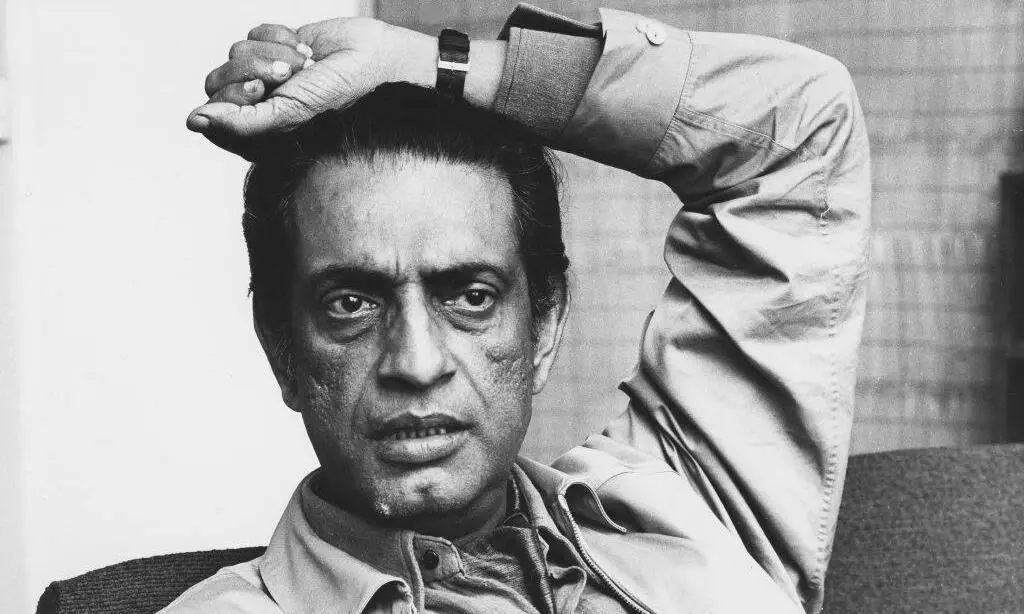Satyajit Ray’s 104th Birth Anniversary: Satyajit Ray and the Feminine Gaze
The women in legendary director Satyajit Ray’s films were never just accessories to the men

In Satyajit Ray’s ‘Mahanagar’, there is a quiet but powerful moment when Madhabi Mukherjee’s Arati is encouraged by her Anglo-Indian colleague Edith to try lipstick.
“What’s wrong with using a little lipstick?” Edith says as she applies it to Arati’s lips.
It is such a simple scene, yet it says so much. That lipstick becomes a symbol that Arati is slowly stepping into a more modern, independent version of herself as she starts working outside the home.
‘Mahanagar’ has always been close to my heart when it comes to stories about women. It is about housewives joining the workforce. It shows how earning money - her own money - gives Arati a new sense of control, not just over her household but over herself.
Remember that scene where she receives her first salary? She takes a moment, stands in front of the bathroom mirror and looks at the money with quiet pride. That moment captures her transformation into an empowered woman. ‘Mahanagar’ is also a reflection on gender, change and quiet rebellion.
Satyajit Ray always had a way of portraying women that felt real. Whether it is the silent resilience of Charulata, the calm confidence of Aparna (Sharmila Tagore) in ‘Aranyer Din Ratri’, the strength and dignity of Sarbajaya in ‘Pather Panchali’ or Arati’s independence in ‘Mahanagar’, the women in Ray’s films were never just accessories to men. They had their own dreams, fears, flaws and decisions.
Actress Mimi Chakraborty relates to Arati in ‘Mahanagar’.
“Arati goes from being a housewife to the one who supports her family after her husband loses his job. The sense of freedom she feels after earning… Ray captured that brilliantly. It’s still so relevant today,” said Mimi, who also once played Charulata in a school play.
For Paoli Dam, ‘Charulata’ is her go-to film.
“Madhabi Mukherjee’s Charulata is not a passive character. She’s intelligent, curious and full of artistic energy. Just watch that opening sequence where she’s looking out the window - you can feel her loneliness, her sharp mind - all without a single word. Her inner world takes centre stage, which is so rare for women in films,” said the ‘Moner Manush’ actress.
She further added, “In a world that is always shouting about feminism, ‘Charulata’ doesn’t need to. The feminism in it is quiet and subtle. And that’s what makes it powerful. Maybe that’s because Ray grew up around strong women,” said Paoli.
Ray’s 1981 film ‘Sadgati’ might not be as widely discussed as ‘Charulata’ or ‘Apur Sansar’, but it is one of his most powerful works. Based on Munshi Premchand’s short story, the film stars Om Puri and Smita Patil and is a hard-hitting take on caste and inequality. Even today, when caste-based violence still exists, the film feels just as relevant.
Actress Ananya Chatterjee of ‘Annapurna’ fame said the role of Jhuria (Smita Patil) in ‘Sadgati’ has stayed with her.
“It’s not one of Ray’s most popular films, but I loved it. I’ve always admired Smita Patil. I’d love to play a character like Jhuria, a village woman from a lower caste, facing harsh realities,” she said.
As we celebrate the 104th birth anniversary of the master filmmaker, his women characters still feel alive. His stories are full of everyday choices, moral dilemmas and the changing world around us and they still speak to the times we live in.



